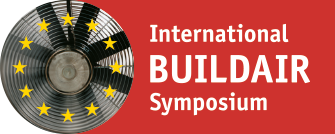The requirements concerning airtightness of the building envelope were introduced into the national standard ČSN 73 0540-2 in 2002. Until now the proof of compliance has not been mandatory. The compliance should be checked by means of testing according to the ČSN EN ISO 9972 standard (introduced in 2016 and translated into the Czech language in 2017).
However, the ČSN 73 0540-2 standard only sets the requirements but gives no further information about the time of test and the building preparation or other guidance beyond the ČSN EN ISO 9972 standard.
In 2009 the energy performance programme Green savings was launched. In the framework of this EP programme, the airtightness of new passive houses and refurbished buildings equipped with ventilation systems with heat recovery must be tested according to the ČSN EN ISO 9972 standard in order to obtain the financial subsidies. For this purpose, a document called Methodical directive for air permeability testing of building envelopes was elaborated as a supplement to the ČSN EN ISO 9972 standard in order to avoid misleading interpretation of unclear or ambiguous instructions in the ČSN EN ISO 9972. The document specifies in detail:
- measured extent (testing of individual parts of the building instead of the whole building is allowed, procedures according to the TNI 73 0330 are recommended for this purpose)
- the time of measurement (testing before the completion of the building is allowed)
- state of the building at the moment of testing (a list of specific conditions which have to be fulfilled if the building is tested before its completion)
- building preparation (Method 3 according to the ČSN EN ISO 9972 is prescribed, a detailed list of the openings and their preparation is provided)
- requirements on measuring device (yearly calibration of manometers is prescribed, calibration of air flow measuring devices is not prescribed)
- position of the measuring device (preferentially, the device should be fitted into the most airtight opening in the building envelope; if possible, fitting into the entrance door should be avoided)
- calculation of the reference value (the air change rate at 50 Pa, n50 is used as airtightness indicator, therefore detailed rules for calculation of the internal volume are provided)
- test procedure (for selected steps of the testing procedure, supplementary instructions beyond ČSN EN ISO 9972 are provided)
- test report (a prescribed spreadsheet template of the test report must be used)
- protection of the air barrier system (if the building is tested before its completion, preventive measures have to be taken in order to avoid the air barrier system damage during the subsequent construction phases)
In addition to the documents mentioned above, since 2009 the preliminary standard TNI 73 0330 defines testing procedures for multifamily residential buildings. A residential building can be tested either as a whole, or the residential part can be tested separately (if e.g. it is composed of different parts serving for different use), or it can be tested by apartments. The standard defines sampling rules for the apartments to be tested separately as well as procedures for the justification of compliance with requirements if the individual test results have to be compared with a single required value which is valid for the building as a whole.
In March 2019, the revision of the ČSN 73 0540-2 standard started. It is not intended to change the current level of airtightness requirements, but several options of amendment introducing more reliable evaluation of airtightness of very large buildings are currently under discussion (in case of very large buildings, even with poor quality of the building envelope, it is possible to obtain satisfactory values of n50 which is used as indicator in the current version of the standard). Besides, all the existing supplementary guidelines to ČSN EN ISO 9972 dispersed in different documents mentioned above, should be collected, updated and published as a single document generally valid, referenced in the ČSN 73 0540-2 standard.
Note
For more information, please contact the reference author at: jiri.novak.4@fsv.cvut.cz





